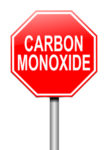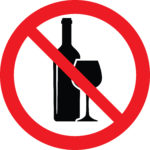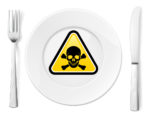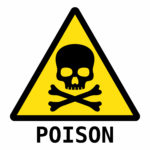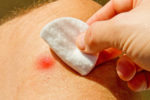Carbon monoxide is a silent killer. It is a gas that is smaller than the oxygen and carbon dioxide molecules in the air. Sources can include cars, machines, gas central heating or cookers. The gas is colourless and odourless, and in concentrations, it can be fatal. The Science behind Carbon Monoxide Poisoning In every red […]
Carbon Monoxide Poisoning
Carbon monoxide (CO) is a colourless, odourless gas known as the “silent killer.” It can emanate from faulty gas appliances, vehicles, and other fuel-burning devices. Symptoms include headaches, dizziness, nausea, and fatigue. Prolonged exposure can be fatal.
First Aid Response
- Immediate Evacuation: Move the affected person to fresh air away from the CO source.
- Seek Medical Attention: Call emergency services promptly.
- Monitor Vital Signs: Check for responsiveness and breathing; commence CPR if necessary.
Prevention
- Install CO detectors in homes and regularly test their functionality.
- Ensure regular maintenance of gas appliances by certified professionals.
- Avoid using fuel-burning devices in enclosed or unventilated spaces.
For more details, refer to the Carbon Monoxide page.
Cleaning Products Poisoning
Household cleaning products contain chemicals that can be harmful if ingested, inhaled, or come into contact with skin. Children are particularly at risk due to their curiosity.
First Aid Response
- Ingestion: Do not induce vomiting. Rinse the mouth thoroughly and seek medical advice.
- Skin Contact: Remove contaminated clothing and rinse the skin with plenty of water.
- Inhalation: Move to an area with fresh air immediately.
Prevention
- Store cleaning products out of reach of children, preferably in locked cabinets.
- Keep products in their original containers to avoid confusion.
- Always follow the usage instructions on product labels.
For further details, visit the Cleaning Products Poisoning page.
Alcohol Poisoning
Excessive consumption of alcohol can lead to poisoning, impairing bodily functions and potentially resulting in death. Symptoms include confusion, vomiting, seizures, slow breathing, and unconsciousness.
First Aid Response
- Ensure Safety: Keep the person awake and sitting if possible.
- Seek Medical Help: Call emergency services immediately.
- Monitor: Check for signs of breathing and responsiveness.
- Prevent Choking: If unconscious, place the person in the recovery position to maintain an open airway.
Prevention
- Consume alcohol in moderation and be aware of personal limits.
- Avoid binge drinking and participate in activities that do not involve alcohol.
- Educate others about the dangers of excessive alcohol consumption.
For comprehensive information, refer to the Alcohol Poisoning page.
Food Poisoning
Food poisoning results from consuming contaminated food or beverages. Common symptoms include stomach cramps, diarrhoea, vomiting, and fever.
First Aid Response
- Hydration: Encourage intake of clear fluids to prevent dehydration.
- Rest: Allow the person to rest and recover.
- Seek Medical Advice: If symptoms are severe or persistent, consult a healthcare professional.
Prevention
- Practice proper hand hygiene before handling food.
- Ensure meat is cooked thoroughly to avoid bacterial infections.
- Store perishable foods at the correct temperatures.
- Avoid consuming expired or improperly stored food.
For more details, refer to the Food Poisoning page.
Further Resources
Expand your knowledge on poisoning and first aid:
For comprehensive first aid training, enrol in our First Aid at Work Annual Refresher (VTQ) course.

